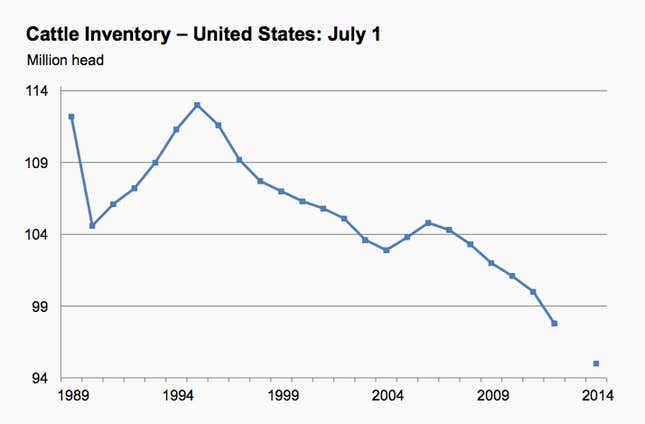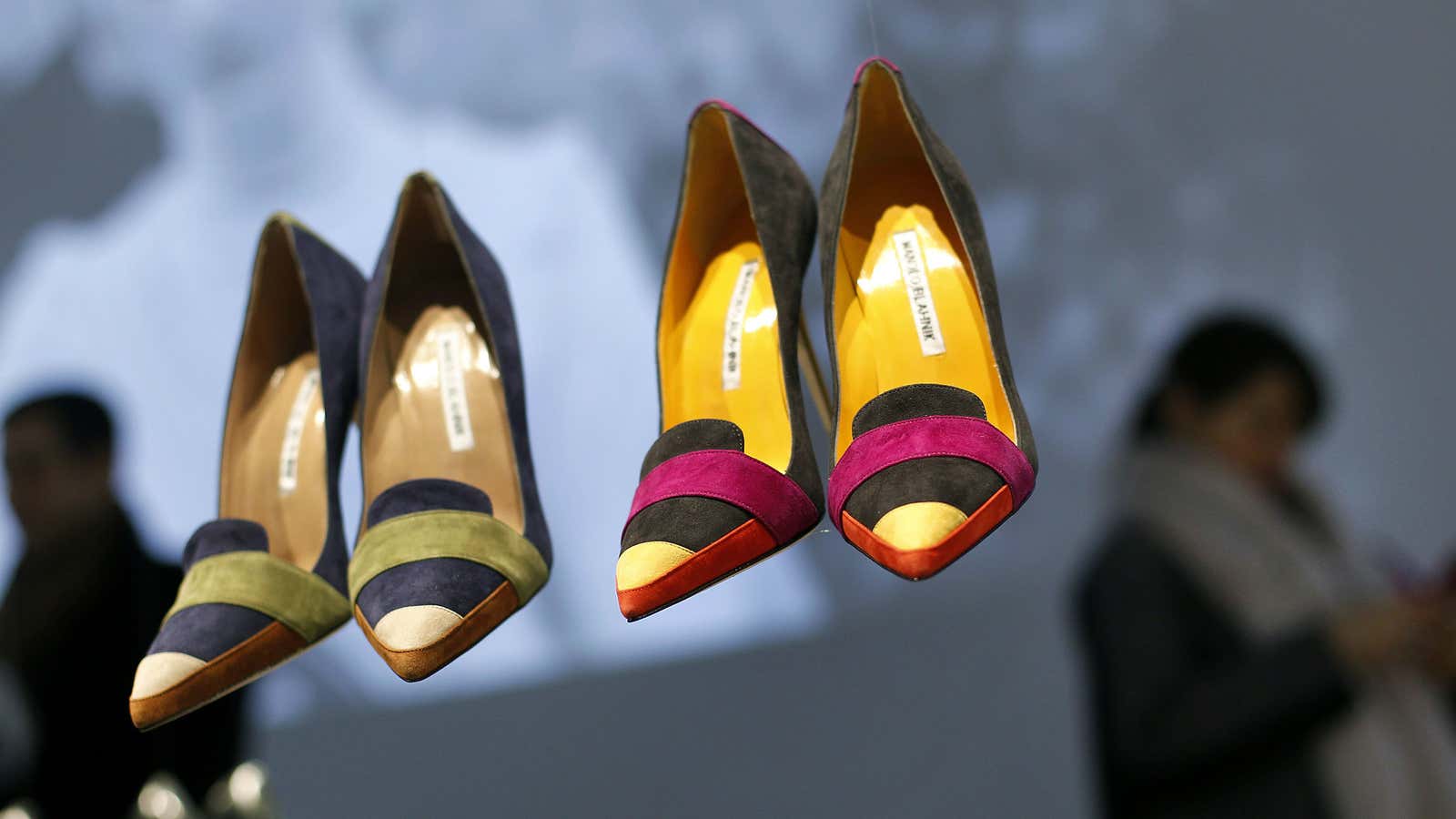The US Bureau of Labor Statistics just released a report showing that clothing got 2% cheaper on average over the last year in the US. Underwear, sweaters, jewelry, and watches have all gone down in price. But it will probably surprise no American who has recently shopped for new boots, loafers, or heels to learn that one category has gotten more expensive: shoes.
On average, BLS reports that shoes have gone up 2.8% in price—likely the result of increasing leather prices. That’s because a cattle shortage in the US has driven leather prices to all-time highs.

The USDA estimates that there are about 95 million cows in the US right now, the lowest number since the USDA began recording cattle populations in 1973 (pdf). In 2013, the US was still the world’s largest producer of cattle hides, just ahead of Brazil (p.8, pdf). So a small US herd goes hand-in-hand with pricier shoes, especially at the luxury end of the spectrum where high-quality hides are required.
Blame drought and the high cost of cattle feed for the waning US cattle population. Even as feed prices begin to come down, a nine-month gestation period and two years to reach slaughter weight means cows will take a while to bounce back. (And shoe fanatics aren’t the only ones suffering: Hot dog-lovers are hurting too.)
If you must shoe shop, now might be the time to consider pleather, vintage, or carefully scouring the post-holiday sales for a classic pair to last beyond a few seasons.
